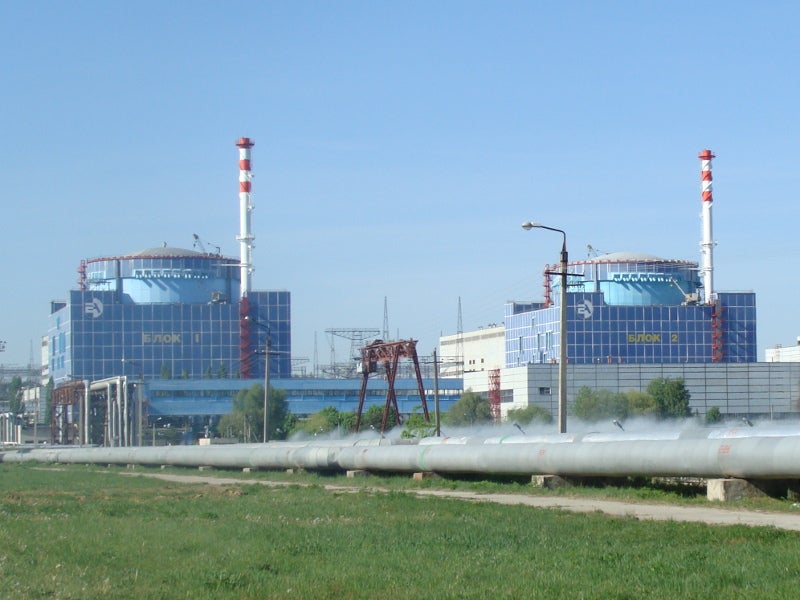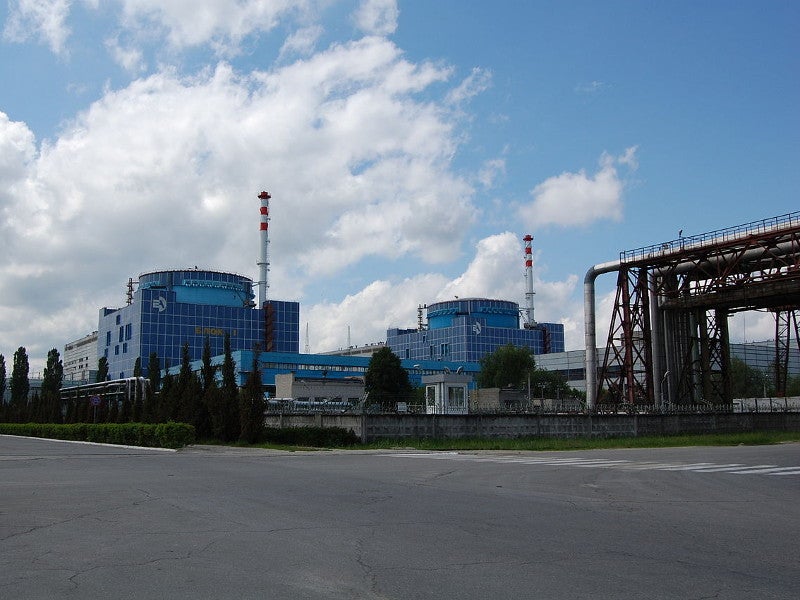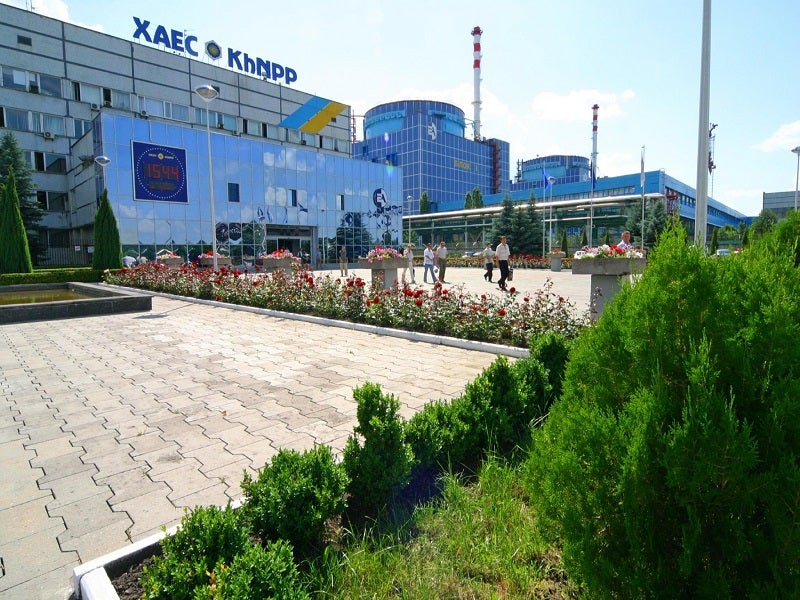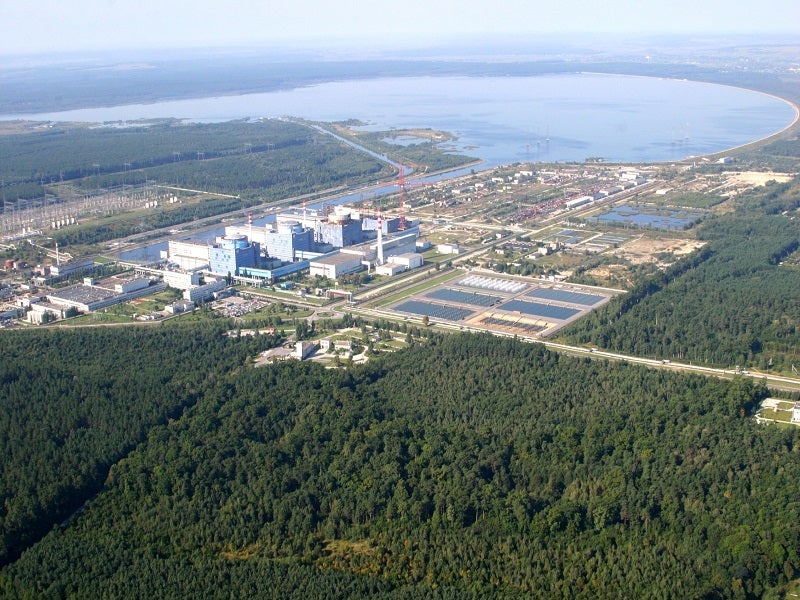Understand the impact of the Ukraine conflict from a cross-sector perspective with the Global Data Executive Briefing: Ukraine Conflict
The Khmelnytskyi nuclear power plant (NPP) comprises two 1,000MW operational units and two more 1,000MW units under construction at the site near Netishyn town, north-west of the Slavutskyi district, Khmelnytskyi region, Ukraine.
Ukraine’s state-owned nuclear power company Energoatom owns and operates the facility. The construction of the NPP started in 1979, and the first unit became operational in 1987, while the second unit was commissioned in 2004.
The design of the third and fourth units will meet enhanced safety standards to be reviewed by the Ukrainian Government.
Khmelnytskyi NPP is a part of the ‘Ukraine-European Union Power Bridge’ project, aimed at developing cross-border transmission networks between Ukraine and European Union (EU) countries.
The funds generated by electricity export from the plant’s second unit were proposed to be used for the construction of units three and four. The decision to link the second unit to the Burshtyn Energy Island and further connect it with the Polish transmission lines is, however, yet to be finalised.
Khmelnytskyi is one of four NPPs in Ukraine, with Rivne, Zaporizhzhia and South Ukraine power plants being the other three. The Ukrainian Government informed the International Atomic Energy Agency (IAEA) in February 2022 that the nuclear power reactors are continuing to operate safely and securely amid tensions caused by the Russian invasion of Ukraine.
Project timeline
Construction of units three and four began in 1985 and 1986, respectively. However, after the Chernobyl nuclear accident in April 1986, the Ukrainian Government imposed a moratorium on the development of new NPPs in the country, resulting in the construction being suspended in 1990.
The moratorium was lifted in 1993 due to energy shortages, and a decision was made to upgrade the safety standards of the nuclear energy industry.
A fresh environmental impact assessment (EIA) was conducted, and construction works on the third and fourth units resumed in November 2020. A draft bill to complete the units using Westinghouse AP1000® reactor technology was submitted to the government in November 2021, which was pending parliamentary approval as of February 2022.
Khmelnytskyi nuclear power plant details
The operational units one and two feature WWER-1000/V320 type reactors. The second unit was modernised with an automated radiation control system upon its commissioning. It also features radiation control and an environment monitoring system.
The passive safety systems in the upgraded WWER-1000/V-392B type reactors, including the core flooding and heat removal system, were improved compared to WWER-1000/V320.
The nuclear plant features PGV-1000 steam generators, RCP-195М type main reactor coolant pumps, a K-1000-60/3000 turbine unit and 1,000MW ТWW-1000-2UZ turbine generator.
The NPP units under construction were earlier proposed to feature V-392B type reactor plant, integrating 1,000MW WWER-1000 type thermal neutron reactors. The Ukrainian Government chose to cancel the Russian reactor deal in 2017.
The Westinghouse AP1000 reactors to be used for units three and four represent the proven Generation III+ pressurised water reactor (PWR) technology, with fully passive safety systems and modularised standard design. The simplified plant design enables high operability, as well as reduced operation and maintenance costs.
Financing
The design and construction of the two new units require UAH723.4bn ($28bn) of funding. The loan agreement that the Ukrainian Government signed with the Russian Federation in April 2010 for the completion of the two new units was scrapped in 2017.
The European Bank for Reconstruction and Development (EBRD) also supported the NPP development.
Energoatom is exploring options to fund the development of the two new units. Negotiations with the US EXIM Bank for the financing are in progress.
Contractors involved
Westinghouse Electric, a nuclear technology supplier based in the US, received a contract from Energoatom to supply Westinghouse AP1000® reactors for units three and four of the Khmelnytskyi plant in November 2021.
Penetron supplied systems for the protection of concrete structures of the plant’s wastewater pumping stations. Elbud Katowice was contracted for the development of the power transmission system for the nuclear plant in 1979.
Eltel Networks designed the 750kV transmission line, switchyard and 3/2 CB 400kV switchyard with a tubular busbar for the power station.







